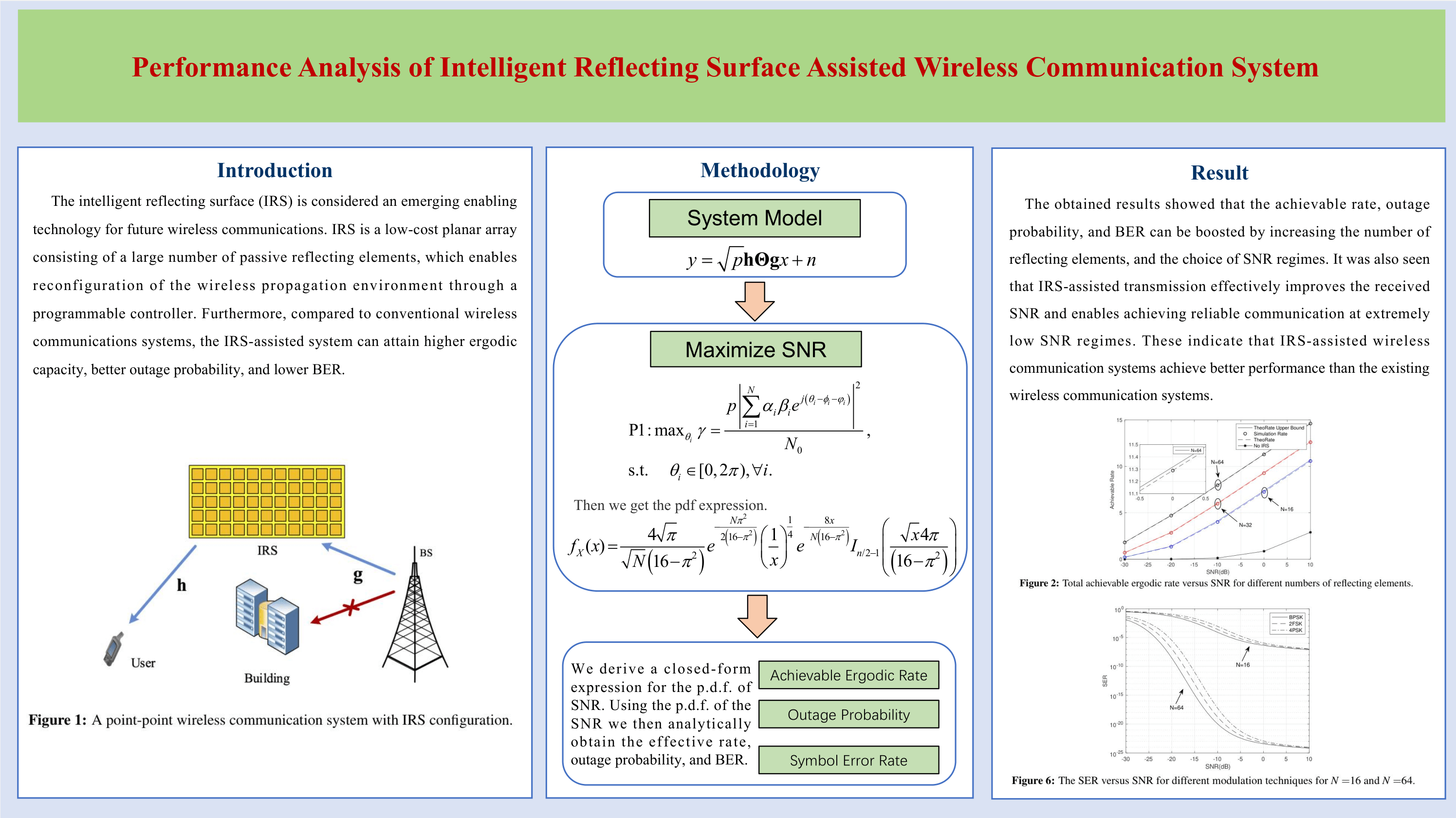 Open Access
Open Access
ARTICLE
Performance Analysis of Intelligent Reflecting Surface Assisted Wireless Communication System
1 School of Computer Science and Cyber Engineering, Guangzhou University, Guangzhou, 510006, China
2 Key Laboratory of Advanced Manufacturing Technology, Ministry of Education, Guizhou University, Guiyang, 550025, China
3 Sichuan Key Laboratory of Indoor Space Layout Optimization and Security Guarantee, Chengdu Normal University, Chengdu, 611130, China
4 School of Information Science and Engineering, Southeast University, Nanjing, 210096, China
* Corresponding Author: Weiqiang Tan. Email:
(This article belongs to the Special Issue: Recent Advances in Backscatter and Intelligent Reflecting Surface Communications for 6G-enabled Internet of Things Networks)
Computer Modeling in Engineering & Sciences 2023, 137(1), 775-787. https://doi.org/10.32604/cmes.2023.027427
Received 28 October 2022; Accepted 13 December 2022; Issue published 23 April 2023
Abstract
In this paper, we investigate the end-to-end performance of intelligent reflecting surface (IRS)-assisted wireless communication systems. We consider a system in which an IRS is deployed on a uniform planar array (UPA) configuration, including a large number of reflecting elements, where the transmitters and receivers are only equipped with a single antenna. Our objective is to analytically obtain the achievable ergodic rate, outage probability, and bit error rate (BER) of the system. Furthermore, to maximize the system’s signal-to-noise ratio (SNR), we design the phase shift of each reflecting element and derive the optimal reflection phase of the IRS based on the channel state information (CSI). We also derive the exact expression of the SNR probability density function (p.d.f.) and show that it follows a non-central Chi-square distribution. Using the p.d.f., we then derive the theoretical results of the achievable rate, outage probability, and BER. The accuracy of the obtained theoretical results is also verified through numerical simulation. It was shown that the achievable rate, outage probability, and BER could be improved by increasing the number of reflecting elements and choosing an appropriate SNR regime. Furthermore, we also find that the IRS-assisted communication system achieves better performance than the existing end-to-end wireless communication.Graphic Abstract

Keywords
Cite This Article
 Copyright © 2023 The Author(s). Published by Tech Science Press.
Copyright © 2023 The Author(s). Published by Tech Science Press.This work is licensed under a Creative Commons Attribution 4.0 International License , which permits unrestricted use, distribution, and reproduction in any medium, provided the original work is properly cited.


 Submit a Paper
Submit a Paper Propose a Special lssue
Propose a Special lssue View Full Text
View Full Text Download PDF
Download PDF Downloads
Downloads
 Citation Tools
Citation Tools
